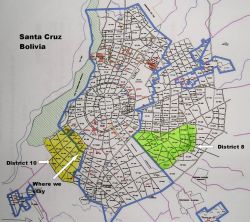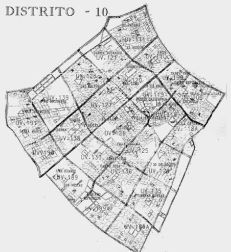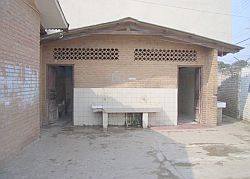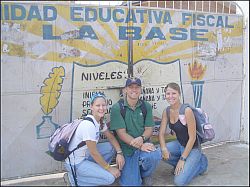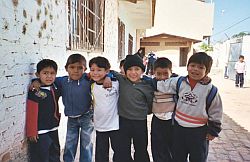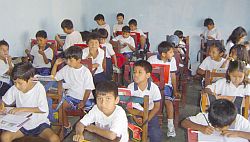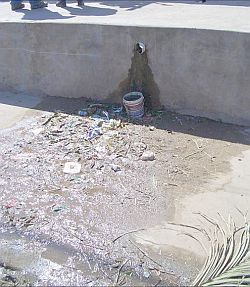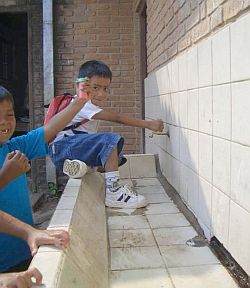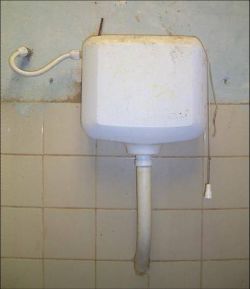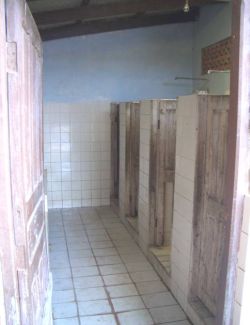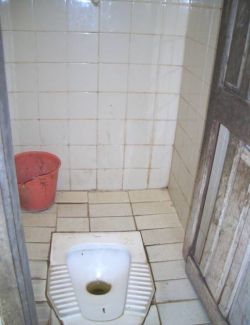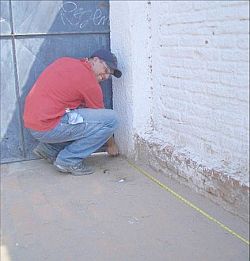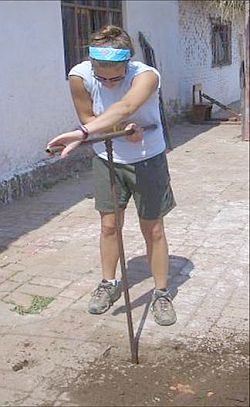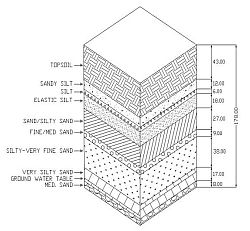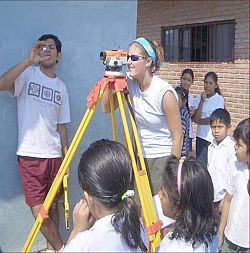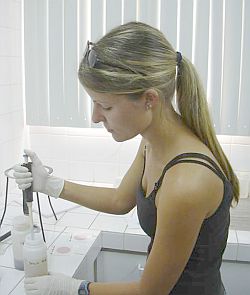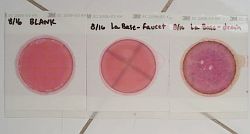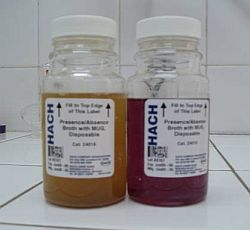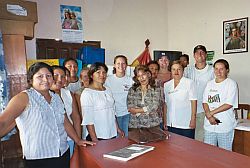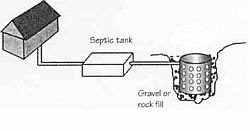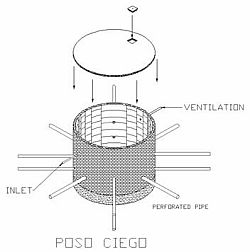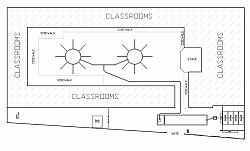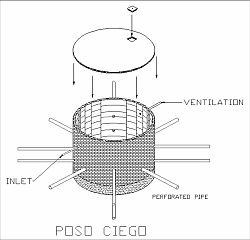
|
|
Septic
System for La Base International
Senior Design: August 2005 S.T.R.8
U.P. Engineering Background In August, 2005 S.T.R.8 U.P. Engineering traveled to Santa Cruz, Bolivia to gather information needed to design an onsite wastewater treatment design for a local school, La Base. The school is located in UV 118 of District 10, just inside the 6th ring of Santa Cruz. The school serves 1,240 students in grades Kindergarten through 8th in three daily shifts. It is estimated that nearly 1,000 students are turned away each year because of overcapacity. |
|
Entryway sidewalk at La Base. The PVC pipe contains run-off water from school and “grey water” from sink. The water tested at this pipe was contaminated with sewage. Child playing
in sink at La Base. Toilet rooms
at La Base include Astra flush tanks and “squat” toilets.
There are currently 8 total toilets. |
ONSITE
WASTEWATER Problem Statement The
current wastewater treatment system at La Base School is of the
traditional Bolivian design. This system was installed 15 years
ago for an estimated 100 students and is currently failing. The
system is currently violating Bolivian codes and standards regarding
application rates of effluent and disposal of wastewater. S.T.R.8
U.P. believes the following factors are causing the failure:
|
|
Matt measuring the site layout |
Data Gathering Onsite
Testing:
Soil boring
results showing mostly silty sand at La Base. Topographic Survey of site showed level elevations |
|
Drinking water samples showed no growth of E. coli or total coliform bacteria. However, the “grey water” sample (far right) contained extremely high numbers of both E. coli and total coliform colonies. These results are consistent with the results of the P/A test. |
Offsite
Testing: Right
Bottle: Drinking water samples tested negative for the presence
of total coliform bacteria. |
Basic information was gathered at meetings, including the parent’s concerns.
Right: Toilet
room survey showed that students used the bathroom 1.76 times per
day. This was combined with the flush tank volume to estimate the
24-hour flow to be 7,482 gal. |
At
La Base: Informational meetings with School Director and PTA Toilet room survey 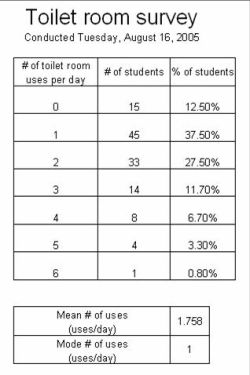 |
Traditional Bolivian System
Three-component
system that includes and inspection tank, septic tank, and dry well
(“poso ciego”). |
Recirculating
Sand Filter (RSF) Effluent
is pumped from septic tank to a system of perforated pipes in a
sand filter. The wastewater passes through the system several times
before it is finally dispersed to a drainfield. |
Modified Bolivian System Similar
design to Traditional Bolivian System. The dry well has a modified
trench system that contains perforated pipes for distribution of
effluent. |
|
|
System Layout
Final Site Layout
Modified Dry Well (“Poso Ciego”) |
Recommended
Design S.T.R.8 U.P.’s final recommendation for La Base is the Modified Bolivian System. The system first moves effluent through an inspection tank used for maintenance purposes, then to a dual chamber septic tank. Solids are removed in the first chamber of the septic tank and cleaner effluent flows over a baffle to the second chamber of the tank. The pump chamber uses a ½ hP pump to dose effluent approximately 6 times a day to the two 3.3m diameter, dry wells located in the courtyard of the school. The dry wells are perforated to allow the effluent to absorb in the soil for final treatment before it reaches the groundwater. The design can handle 2,000 gallons of wastewater each day, so S.T.R.8 U.P. is also recommending La Base take part in a water conservation program to reduce their daily flow. Examples of reducing wastewater include reducing the volume of water per flush and the number of flushes per day. An educational program was developed for La Base about water conservation as part of the final design. The estimated construction cost for the modified system is $6870 USD. |
Future Recommendations S.T.R.8
U.P. Engineering’s future recommendations for La Base include
connecting to municipal sewer lines, starting a basic sanitation
and health program, and installing more toilets. The municipal lines
do not currently reach La Base, but are expected to within the next
15 years. The team suggests pushing the local government for these
lines and connecting as soon as possible because the Modified Bolivian
septic system is not a permanent solution. |
| Michigan Technological
University Department of Civil and Environmental Engineering 1400 Townsend Drive Houghton, Michigan, 49931 - 1295, USA Department Phone: 1-906-487-2520 Department Fax: 1-906-487-2943 Department E-mail: cee@mtu.edu |

